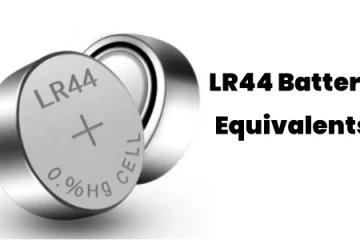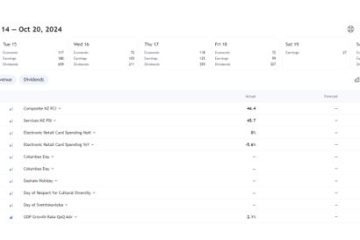A sputtering, silent, or leaking air conditioner can turn a hot day into a miserable one. But before you panic and call for repairs, there are some simple troubleshooting steps you can take to get your AC back on track.
From checking the thermostat and replacing the filter to inspecting for leaks and cleaning the coils, many common AC problems have DIY solutions.
In this blog, we’ll walk you through the most common AC issues and how to tackle them.
So grab your toolbox and let’s get your AC back to doing what it does best — keeping you cool and comfortable!
Common AC Problems and Their Causes
Your air conditioner is a complex machine, but it’s not always a mystery why it’s acting up. Often, the problem leaves clues in the form of unusual behavior or sounds. Let’s get into the most common AC issues and what might be causing them.
AC Won’t Turn On at All
Here are the reasons why AC won’t turn on.
- Check the Thermostat: Make sure it’s set to “cool” and the temperature is set below the current room temperature. Sometimes, it’s as simple as dead batteries in the thermostat.
- Check the Breaker: Head to your electrical panel and see if the breaker for your AC has tripped. If it has, flip it back on. If it trips again, call an electrician, as this could indicate a wiring problem.
- Check the Power: Is your AC plugged in? If it’s a window unit, make sure it’s securely plugged into the outlet.
AC Isn’t Cooling Enough
Here is why AC isn’t cooling.
- Dirty Air Filter: This is the most common culprit. A clogged filter restricts airflow — making it harder for your AC to cool the air. Replace the filter if it’s dirty.
- Low Refrigerant: Refrigerant is the liquid that cools the air in your AC. If it’s low, your AC won’t be able to cool effectively. This requires a professional to fix, as they’ll need to find and repair the leak before refilling the refrigerant.
- Frozen Evaporator Coil: If your AC is blowing warm air, it could be because the evaporator coil (the part inside your house that absorbs heat) is frozen over. This usually happens due to restricted airflow, so check your filter and make sure nothing is blocking the vents.
Weak Airflow
Here are some reasons for weak airflow.
- Dirty Filter: Again, a dirty filter is often the problem. Replace it and see if that improves airflow.
- Blocked Vents or Registers: Make sure all the vents and registers in your home are open and not obstructed by furniture, curtains, or other items.
- Blower Motor Issue: If the air coming out of the vents is weak, even after cleaning the filter and vents, there might be a problem with the blower motor. This is a job for a professional.
Unusual Noises
Here are some reasons for unusual noises.
- Hissing or Whistling: This usually indicates a refrigerant leak. Turn off your AC and call a technician immediately.
- Rattling or Banging: Loose parts or debris in the fan can cause rattling. Check for loose screws or panels and tighten them. If the noise persists, call a professional.
- Squealing or Screeching: A worn-out fan belt is the usual suspect here. Sometimes you can tighten it yourself, but it’s best to call a technician.
Remember, if you’re unsure about any of these issues or if your troubleshooting efforts don’t solve the problem, don’t hesitate to call a professional HVAC technician. They have the expertise and tools to diagnose and repair your AC safely and effectively.
Essential Tools for AC Troubleshooting
Before you start tinkering with your AC, it’s important to have the right tools on hand. Most of these are common household items, so you might already have them in your toolbox. If not, you can easily find them at your local hardware store.
Here’s what you’ll need.
- Screwdrivers: Have a variety of sizes, both flat-head and Phillips-head, to handle different types of screws.
- Wrenches: An adjustable wrench is always handy, but you might also need specific sizes for certain bolts or nuts.
- Multimeter: This handy device can measure voltage, current, and resistance, helping you diagnose electrical issues.
- Wet/Dry Vacuum: This comes in handy for clearing out clogged condensate drain lines.
- Flashlight: A bright light is essential for seeing into dark corners and inspecting hard-to-reach areas of your AC unit.
- Safety Glasses and Gloves: Always wear safety glasses to protect your eyes from debris and gloves to keep your hands clean.
DIY Troubleshooting Steps
Here are some troubleshooting steps.
Check the Thermostat
Before you start tearing into your AC unit, let’s begin with the basics. Head over to your thermostat and double-check that it’s set to “cool” mode and that the temperature setting is lower than the current room temperature.
If your thermostat has batteries, try replacing them with fresh ones — you’d be surprised how often that simple fix does the trick!
Change the Air Filter
Your AC’s air filter acts like its lungs, so it’s important to keep it clean. A dirty filter can choke off airflow, making your AC work harder and not cool properly. Locate your filter (it’s usually in the return air duct near the indoor unit) and slide it out. If it looks dusty or clogged, simply slide in a new one.
Inspect the Circuit Breaker
Sometimes, the issue isn’t with your AC itself, but with the power supply. Head over to your electrical panel and find the breaker that controls your AC. If it’s tripped (in the “off” position), flip it back to “on.” If it trips again, don’t try to reset it – call an electrician, as this could indicate a wiring problem.
Clear Debris from the Outdoor Unit
The outdoor part of your AC, called the condenser unit, needs good airflow to function properly. Leaves, dirt, and other debris can build up around it, making it work harder and less efficiently. Turn off the power to the unit, then use a garden hose (with a gentle spray) or a broom to remove any debris. Be careful not to bend the delicate fins on the coils.
Final Thoughts
Remember, your AC unit isn’t invincible. It will have hiccups now and then, but that doesn’t always mean a costly repair bill. With a little know-how and some basic troubleshooting, you can often get things back to normal in a jiffy.
So, take the time to get to know your AC — how it sounds, how it feels, and what’s normal for it. This way, you’ll be able to spot any issues early on and address them before they become major headaches.
And when in doubt, don’t hesitate to call in a professional. They have the experience and tools to handle the trickier problems, so you can relax and enjoy a comfortable, cool home.



